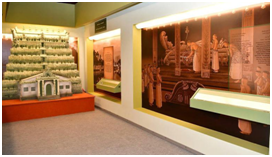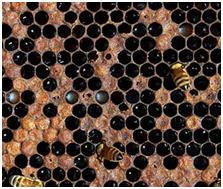SOCIAL ISSUES
1. BIHAR GOVERNMENT TO CONDUCT CASTE-BASED SURVEY
TAGS: GS-I & II- SOCIETY AND SOCIAL ISSUES
THE CONTEXT: The government of Bihar, led by Chief Minister Nitish Kumar, is set to begin the first phase of a caste-based survey in the state. The survey, which is set to conclude on May 31, 2023, will be conducted in two phases.
THE EXPLANATION:
The first phase of the survey will involve counting and recording the number of all households in the state. This phase is set to run from January 7 to January 21, 2023 and will be carried out by 5.24 lakh surveyors. These surveyors, who are mostly teachers, agriculture coordinators, and government workers, will visit each of the 2.58 crore households in urban and rural areas across all 38 districts of the state. The survey is expected to cover an estimated population of 12.70 crore in Bihar.
Phase 2: Caste and Socio-Economic Information Collection
- The second phase of the survey will take place from April 1 to April 30, 2023 and will involve surveyors visiting each household to gather information about the caste of family members, their socio-economic profile, and their exposure to government welfare schemes. There will be 26 columns in the survey form for this phase, and all of the collected data will be uploaded to a portal.
Purpose of the Survey
- According to Bihar Chief Minister, the purpose of the survey is to create a detailed record of castes and communities in the state in order to aid in their development. The survey is expected to be particularly beneficial to the ruling parties of Bihar, the Janata Dal (United) and the Rashtriya Janata Dal, as they have the support of many socially and economically disadvantaged caste groups. The survey report will allow for more effective implementation of welfare schemes for these groups.
Data Collection Methods
- Data for the survey will be collected digitally through a mobile application as part of an eight-level survey process from the panchayat to the district level. The app will include questions about the place of residence, caste, number of people in the family, their profession, and their annual income. Information will also be collected about family members who are living outside the state.
Difference between SECC and Census
Census
The Census provides a picture of the Indian population
Census falls under the Census Act of 1948 and all data are considered confidential
SECC
SECC is a tool to identify beneficiaries of state support
All the personal information given in the SECC is open for use by Government departments to grant and/or restrict benefits to households.
HEALTH ISSUES
2. INDIA’S KALA-AZAR CASES DECLINED 98.7%
TAGS: PRELIMS PERSPECTIVE- GS-II-HEALTH ISSUES
THE CONTEXT: According to the Union Health Minister, Kala-azar cases in India fell to 834 in 2022 from 44,533 in 2007 — a 98.7 per cent decline.
THE EXPLANATION:
- As many as 632 endemic blocks (99.8 per cent) spread across Bihar, Uttar Pradesh, Jharkhand and West Bengal have received elimination status (less than one case per 10,000), the minister added. He was chairing a high-level review meeting on the status of the disease in these four endemic states.
- Only one block (Littipara) of Pakur district, Jharkhand is in the endemic category (1.23 cases / 10,000 population).
- After malaria, kala-azar is the deadliest parasitic disease in the world. It is one of the three conditions in the disease group called leishmaniasis caused by the protozoa parasite Leishmania. The parasite is transmitted to humans by the bite of an infected female phlebotomine sandfly, a tiny 2-3 mm long insect vector, according to the World Health Organization (WHO).
- Visceral leishmaniasis or kala-azar is the most serious form of the disease and as of November 2022, about 89 per cent of the global cases were reported from eight countries: Brazil, Eritrea, Ethiopia, India, Kenya, Somalia, South Sudan and Sudan, WHO noted. India contributes 11.5 per cent of total cases reported globally.
VALUE ADDITION:
What is Kala Azar Disease?
Kala Azar or black fever is a disease caused by infection with Leishmania parasites. It is transmitted by female sandfly – Phlebotomus argentipes. It is also known as visceral leishmaniasis or black fever or Dum-Dum fever.
Types:
Cutaneous leishmaniasis:
- This is another form of Kala-azar which results in skin lesions – mainly ulcers on the exposed parts of the body, which creates scars and serious disability. The lesions usually are painless but can be painful, particularly if open sores become infected with bacteria. Types of Cutaneous leishmaniasis:
Mucosal Leishmaniasis:
- In this type of Cutaneous leishmaniasis, the infection results from the dissemination of parasites from the skin to the naso-oropharyngeal mucosa.
- Symptoms
- Initially, leishmania parasites cause skin sores or ulcers at the site of the bite. If the disease progresses, it attacks the immune system.
- Kala azar presents after two to eight months with more generalized symptoms including prolonged fever and weakness.
Treatment: Treatment of Kala Azar is done through liposomal AmB – this is the drug of choice for immunocompetent patients. There are other treatment options available such as paromomycin, miltefosine and multidrug therapy treatment.
PRELIMS PERSPECTIVE
3. WORLD’S FIRST PALM-LEAF MANUSCRIPT MUSEUM IN KERALA
TAGS: PRELIMS PERSPECTIVE
THE CONTEXT:The recently opened Palm Leaf Manuscript Museum in Thiruvananthapuram has added to the cultural and intellectual life of the state of Kerala.
THE EXPLANATION:
The museum, which is the world’s first of its kind, contains 187 manuscripts and other artefacts related to the former Travancore kingdom from 650 AD until the end of the 19th century. It also has documents from the regions of Kochi and Malabar.
Exhibits at the Museum
- The museum’s exhibits include palm leaf manuscripts, styluses, carriers for Cadjan bundles, copper plates, and
 bamboo splints. The museum is divided into eight galleries, each focused on a different aspect of Travancore history, including “History of Writing,” “Land and People,” “Administration,” “War and Peace,” “Education and Health,” “Economy,” “Art and Culture,” and “Mathilakam Records.” Some galleries also include films and QR code technology for gathering additional information.
bamboo splints. The museum is divided into eight galleries, each focused on a different aspect of Travancore history, including “History of Writing,” “Land and People,” “Administration,” “War and Peace,” “Education and Health,” “Economy,” “Art and Culture,” and “Mathilakam Records.” Some galleries also include films and QR code technology for gathering additional information. - The museum is particularly notable for its manuscripts, which are written on cured and treated palm leaves and contain primary source material on a variety of topics. One of the most famous manuscripts is the account of the Battle of Colachel, in which Travancore’s AnizhamThirunalMarthanda Varma defeated the Dutch East India Company in 1741. This battle put a halt to Dutch expansion in India and cemented Travancore’s place as a major power in the region.
- The museum is divided into eight galleries representing different segments of Travancore history: ‘History of Writing’, ‘Land and people’, ‘Administration’, ‘War and peace’, ‘Education and Health’, ‘Economy’, ‘Art and culture’, and ‘Mathilakam Records’. These galleries also include films and QR code technologies for gathering information.
Conservation Efforts
- The Palm Leaf Manuscript Museum was created as part of a larger conservation effort by the state of Kerala. The museum is located in a three-century-old building that is home to the Central Archives for the state government. The first phase of the museum’s collection was selected from 1.5 crore (15 million) palm leaf records that had been poorly preserved throughout the state.
- The manuscripts at the museum provide important information on the development of writing in the area, including the evolution of the Malayalam script from earlier systems like Vattezhuthu and Kolezhuthu. They also offer insights into the complex administrative systems, proclamations of the Travancore royals, and international negotiations and agreements that shaped the kingdom’s history.
- The Palm Leaf Manuscript Museum is a valuable resource for both general visitors and specialized researchers. It offers a glimpse into the rich history of the Travancore kingdom and helps to fill in gaps in our understanding of Kerala’s past. The museum’s audio-visual technology and multimedia exhibits make it an engaging and informative experience for all who visit.
4. HAWAII’S KILAUEA VOLCANO ERUPTS
TAGS: PRELIMS PERSPECTIVE- GS-1- GEOGRAPHY
THE CONTEXT:Hawaii’s Kilauea volcano, one of the world’s most active, erupted again releasing lava fountains and discharges of volcanic ash into the air.
THE EXPLANATION:
- The Hawaiian Volcano Observatory detected a glow in webcam images indicating Kilauea had begun erupting inside Halemaumau crater at the volcano’s summit caldera. The observatory raised Kilauea’s alert level lowered it from warning to watch because the initial high effusion rates are declining and no infrastructure is threatened. The observatory expects the eruption to remain in the summit.
- There is generally a three-month cooling off period before scientists consider an eruption to be complete. It is currently unclear why both Kilauea and Mauna Loa ceased erupting at around the same time in December 2021.
Cultural and Spiritual Significance
- Volcanic eruptions hold significant cultural and spiritual meanings for native Hawaiians. During the Mauna Loa eruption in November 2021, many Hawaiians participated in traditional practices such as singing, chanting, and dancing in honor of Pele, the god of fire and volcanoes.
About Kilauea Volcano
- The Kilauea volcano is the most active of the five volcanoes that make up the Island of Hawaii. It is a shield
 volcano, which is a type of volcano composed of fluid lava and characterized by its vast lava flow.
volcano, which is a type of volcano composed of fluid lava and characterized by its vast lava flow. - Kilauea has two active rift zones and a recently formed caldera, a massive depression formed when the ground surface collapses into an emptied magma chamber. The pit crater within Kilauea is called Halemaumau, which contained a lava lake before it began erupting in multiple locations in 2018.
Kilauea’s Last Eruptions
- This is not the first time Kilauea has erupted in recent years. It last erupted for 16 months starting in September 2021, and for about two weeks in November 2021, Hawaii had two volcanoes, Kilauea and Mauna Loa, spewing lava side by side.
5. WORLD’S FIRST VACCINE FOR HONEYBEES GETS CONDITIONAL NOD IN US
TAGS: PRELIMS PERSPECTIVE
THE CONTEXT: Recently, the United States Department of Agriculture (USDA) has granted a conditional license for a vaccine for honeybees to curb American foulbrood (AFB), a fatal bacterial disease for the insect.
THE EXPLANATION:
- US has approved the first-ever vaccine for honey bees which will confer protection from the American
 foulbrood disease, raising hopes of a new weapon against diseases that routinely ravage colonies that are relied upon for food pollination. The US Department of Agriculture (USDA) has permitted a conditional license for a vaccine, developed by a US-based biotech company.
foulbrood disease, raising hopes of a new weapon against diseases that routinely ravage colonies that are relied upon for food pollination. The US Department of Agriculture (USDA) has permitted a conditional license for a vaccine, developed by a US-based biotech company. - The vaccine, which contains an inactivated form of the causative bacteria, will be administered along with the royal jelly feed given by the worker bees to the queen bee. The developing bee larvae, being exposed to the vaccine, will have immunity to the foulbrood disease when they hatch. This will cut down the death rates associated with the disease, claims the company.
There is no cure for the foulbrood disease:
- American foulbrood (AFB) is an infectious disease caused by the bacterium Paenibacillus larvae that can weaken and kill honey bee colonies. Currently, there is no cure for this contagious disease.
- Beekeepers follow one treatment method and that is to destroy and burn the infected hives and administer antibiotics to the nearby colonies in order to curb the spread of the disease.

 bamboo splints. The museum is divided into eight galleries, each focused on a different aspect of Travancore history, including “History of Writing,” “Land and People,” “Administration,” “War and Peace,” “Education and Health,” “Economy,” “Art and Culture,” and “Mathilakam Records.” Some galleries also include films and QR code technology for gathering additional information.
bamboo splints. The museum is divided into eight galleries, each focused on a different aspect of Travancore history, including “History of Writing,” “Land and People,” “Administration,” “War and Peace,” “Education and Health,” “Economy,” “Art and Culture,” and “Mathilakam Records.” Some galleries also include films and QR code technology for gathering additional information. foulbrood disease, raising hopes of a new weapon against diseases that routinely ravage colonies that are relied upon for food pollination. The US Department of Agriculture (USDA) has permitted a conditional license for a vaccine, developed by a US-based biotech company.
foulbrood disease, raising hopes of a new weapon against diseases that routinely ravage colonies that are relied upon for food pollination. The US Department of Agriculture (USDA) has permitted a conditional license for a vaccine, developed by a US-based biotech company.